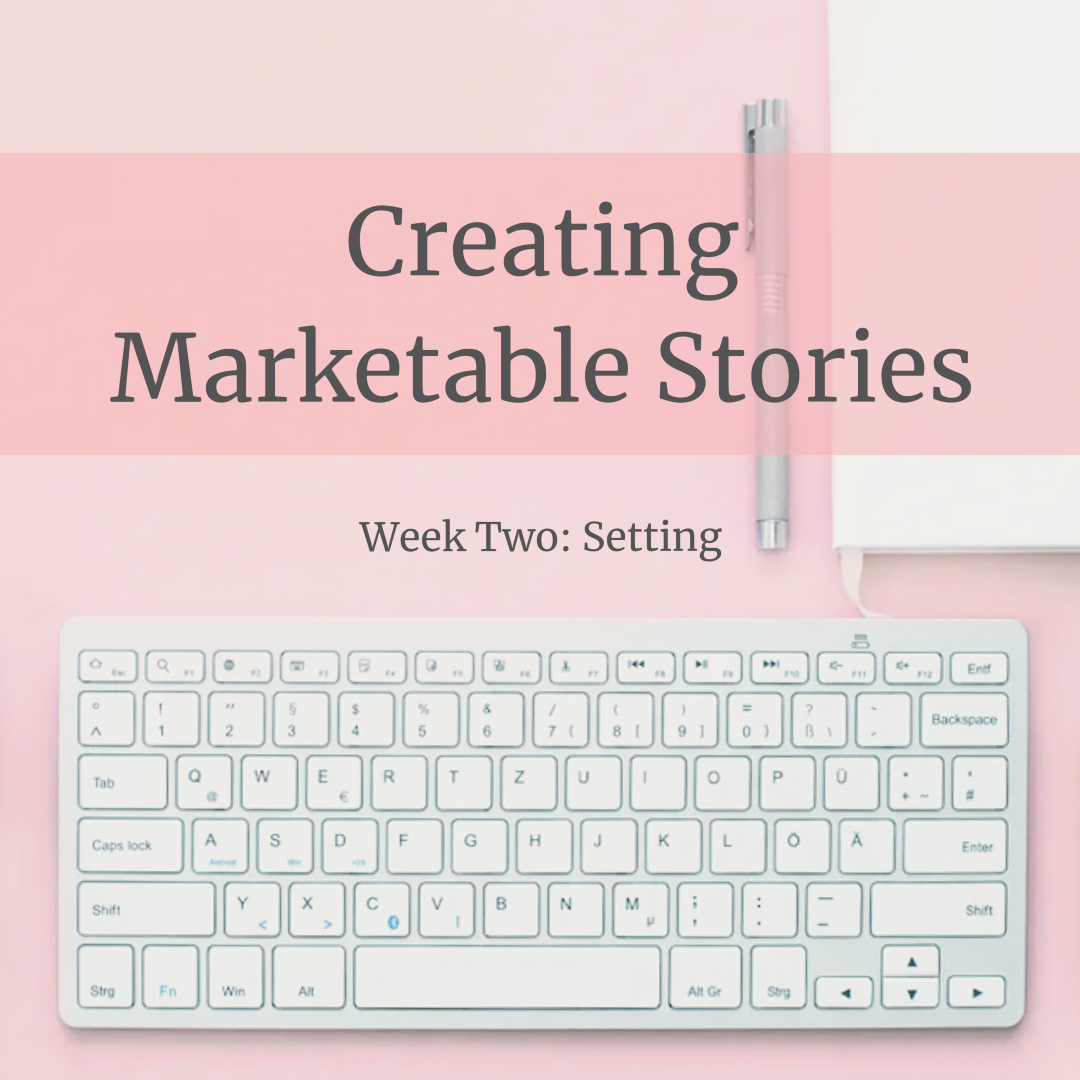Creating Marketable Stories ~ Week Two
Week 2: Setting
How does setting make or break a story’s marketability, you ask? While a romantic fiction novel is meant to whisk the reader away to a dreamy escape, and the setting should convey that, it’s more to do with how the setting is written.
One of the things that makes a marketable story for romance is pacing. And what will pace your story well and have the reader turning pages is to describe the setting as the story is moving along, instead of in long paragraphs of description. Root your characters’ actions in the setting and use it to describe what they’re doing.
The setting of a story isn’t just where the story takes place. It helps to give details about the character’s world within it. Where we live infuses us with our moral code, shapes our view of the world, and makes us who we are. When dealing with setting, as authors, we have to ask ourselves how that location impacts the plot and the characters, rather than simply stating information about it.
As I’m writing, I like to think of my books as having a few different settings: the main setting(s), where the story is taking place, and others within the character themselves (where they’ve come from). The former will be evident in description of the action here and now, while the ladder will be clear in flashbacks and memories. For example, has the main character been living in New York and come back to her small town in Tennessee? If so, both locations will inform that character and give her a unique way of approaching the conflict. That’s where you embed the setting.
Let’s take a look at two passages from the first two pages of my novel The Christmas Letters to see how the setting impacts the characters: (Setting elements are in pink and the action is bolded. Notice how the setting fits within the story rather than being tacked on to it.)
“I’m so sorry, Mama, I can’t talk right now,” Elizabeth Holloway said gently, the phone pressed to her diamond-studded ear, as snow fell like feathers against the glittering buildings of the New York City skyline. “I’ll call you back first thing tomorrow, I promise.”
“Liz,” her mother, Loretta, breathed anxiously down the line in that southern accent that used to sing Elizabeth to sleep at night.
If Elizabeth closed her eyes, she could almost hear her mother’s melody over the chirping of the crickets out back of Nan’s old farmhouse in Mason’s Ridge, Tennessee, the rustling of the trees in the apple orchard, and the squeak of the screened door as Mama stepped through it onto the front porch. While they’d lived just down the road, Nan’s little farmhouse tucked away in the hills had been where both of them had spent most of their time.
In the above passage, Elizabeth is in New York, wearing diamond earrings, in the snow, with a backdrop of the city skyline. We get a sense of where she is, without needing a whole paragraph devoted to it. We also understand where she’s come from. In her flashback, we get the actual setting of most of the novel. But rather than listing things about the setting, instead, elements of the setting are used to describe her memories of it while embedded in action. So, for example, rather than stating, “Her nan lived in an old farmhouse that had birds and lots of trees and she used to visit,” those facts are rooted in the memory itself. Notice how a lot of the setting is used to describe where the action (hearing a melody, rustling of trees, squeak of doors) is happening. Instead of telling the reader about the setting, the reader is seeing it through her eyes and her memory.
Now that we have a sense of her small town, we go back to New York a few paragraphs a page or so later:
Holding the phone, she put one stiletto heel out of the limo and took the bellman’s gloved hand, the man guiding her out of the car outside The Plaza where she planned to have drinks, chat with important people, and, if she was lucky, get to do the waltz on the dance floor—her favorite thing at these events. She raised her bright-red ball gown to keep the satin from grazing the snow that had piled up in the gutter, a chill slithering down her limbs. Her mother continued to speak, but Elizabeth struggled to concentrate on her words with all the commotion.
The mammoth building in front of her gleamed like a golden torch, surrounded by dazzling Christmas trees, but Elizabeth barely gave it a thought.
Again, use the setting to move the story along. Instead of stating that Elizabeth was dressed in a fancy dress and standing outside of The Plaza, that information is inferred by imbedding it within the action of the story. We get a sense of her New York style by the diamond earrings, the stilettos, and the big dress—that’s the setting infusing who she is. And then, there’s the action: she’s putting a stiletto heel out of the limo, raising her ball gown, still talking to her mother, and not giving a thought to the gleaming buildings around her.
Using the gorgeous elements of setting to support the action, the reader won’t get bogged down with lengthy descriptions and, instead, will absorb them while the action is moving along. This will greatly impact the pace of the story.
Join us next week as we talk about how to use emotion to make your story the most marketable possible.
© Jenny Hale, 2023
